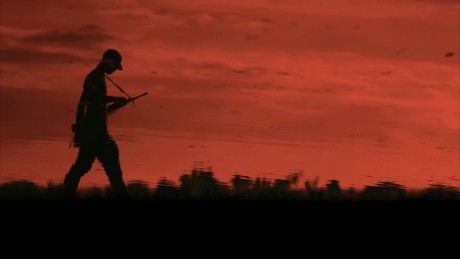


Jenni Kivistö & Jussi Rastas: Colombia in My Arms

This fine – in aesthetics as well as in content – documentary won The Dragon Award for Best Nordic Documentary at the Göteborg Film Festival beginning of February this year. The jury‘s motivation is so precise and well written that I will use some of the words as starting points for this review’s recommendation to show the film on big screens, when festivals ”open” again.
This award is given for the curiosity of the directors in observing vastly different opposing groups, resulting in a polyphonic portrait of a country in which peace doesn’t seem welcome. The precise use of photography and editing submerges us in the differing realities presented and creates a stark contrast between the political sensibilities at play in the natural and urban environments, and the associated poverty and luxury. This film goes beyond being an intimate portrait of a country, and makes us reflect upon colonialism and post-colonialism, capitalism and anti-capitalism, and what keeps us going as humanity.
…Observing vastly different opposing groups. The film takes its beginning in the 2016 peace agreement between the government (when the President was Santos) and FARC. There is a focus on the strong young and sympathetic soldier from FARC, Ernesto, who is to be a leading character through the film. He believes in the peace, believes in putting down the weapons after more than 50 years of war, believes in the right movement for FARC from guerilla to political party. He ends up being disappointed, when all hope for peace is crashed; the government sends soldiers to stop the farmers from picking coca leaves to end their sole possibility for having an income; brutality reigns, paramilitary groups operate, the war continues. Another character is a man from the decadent upper class, who says that he would never allow a FARC person to enter his palazzo, and who has no sympathy for the political class – that also includes a right-wing female politician, who express her philosophy more or less like this: the poor are happy with their lives and so are the rich. No problem!
… The precise use of photography. I would go further in my characterisation: The camera work is excellent, lots of close-ups, energy in the scenes with an editing that lets some of them (the scenes) be loose and develop like those with Ernesto and his friend in the tent in the jungle. Funny they are.
… beyond being an intimate portrait of a country. Yes, definitely there is this clear sense of classes, in that way the filmmakers have succeeded in creating a drama as good as any fiction.
2020, Finland, 90 mins.